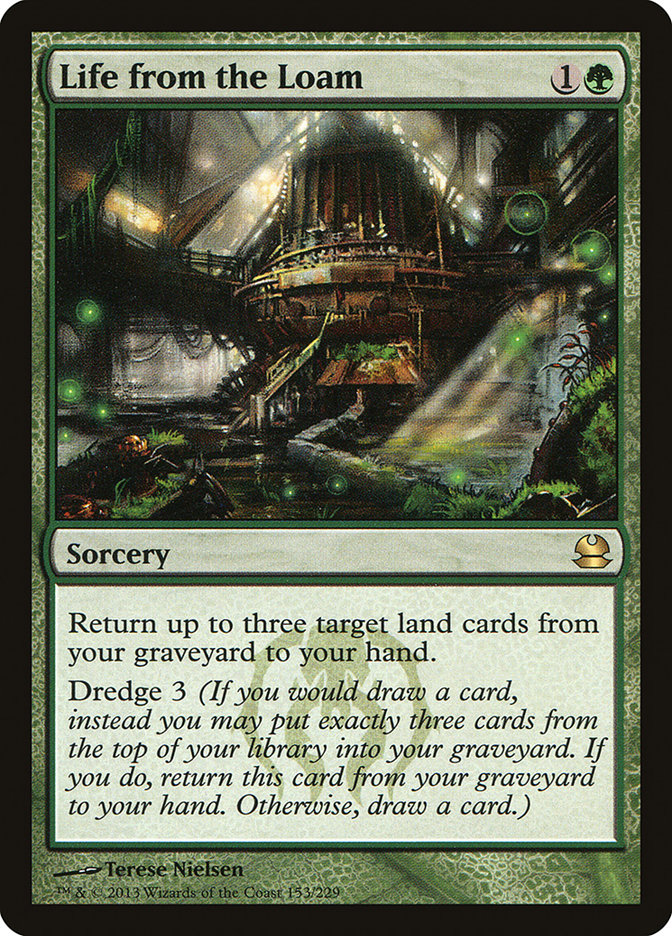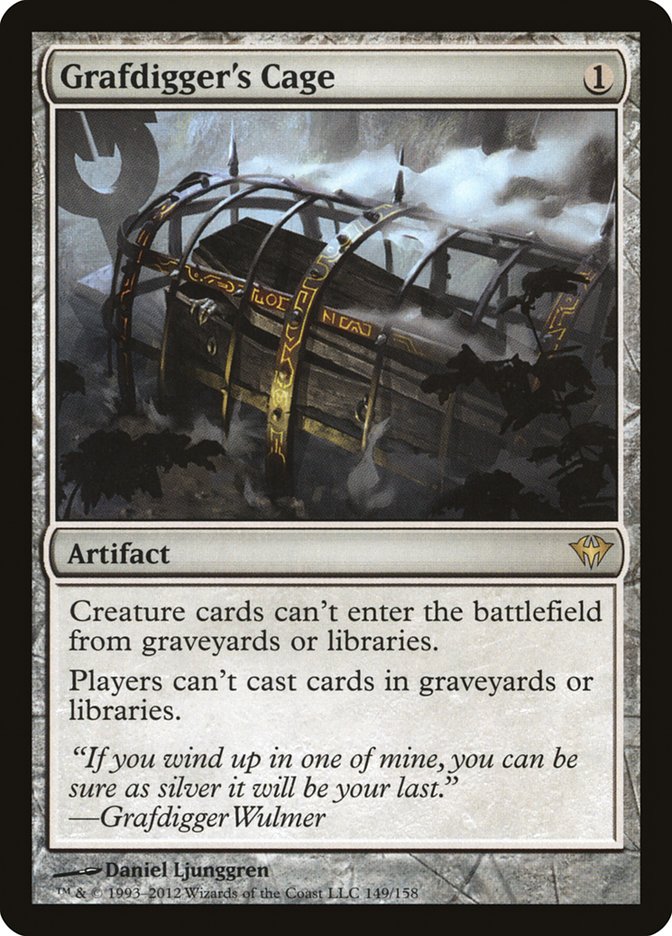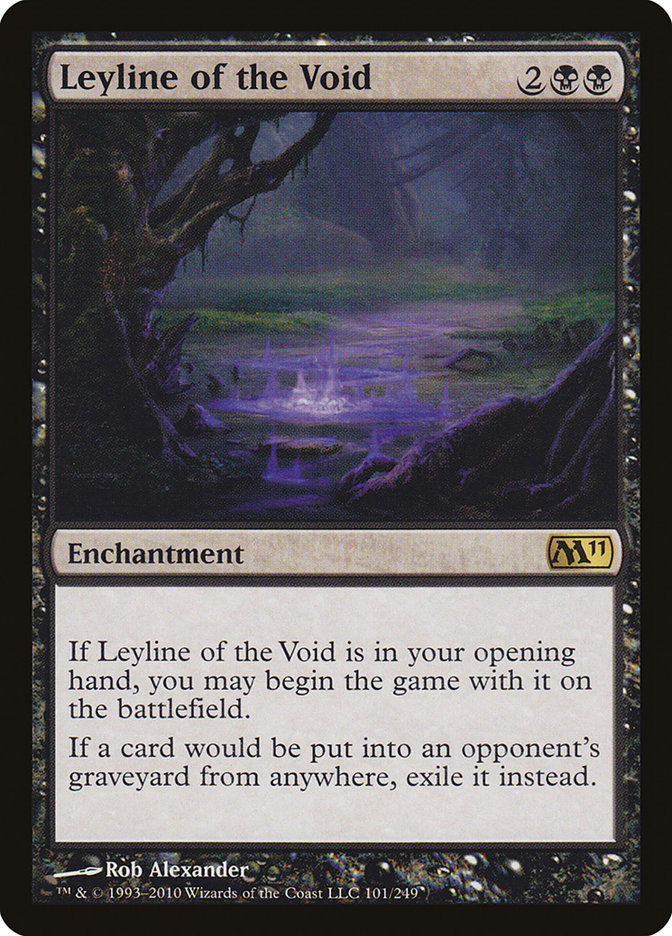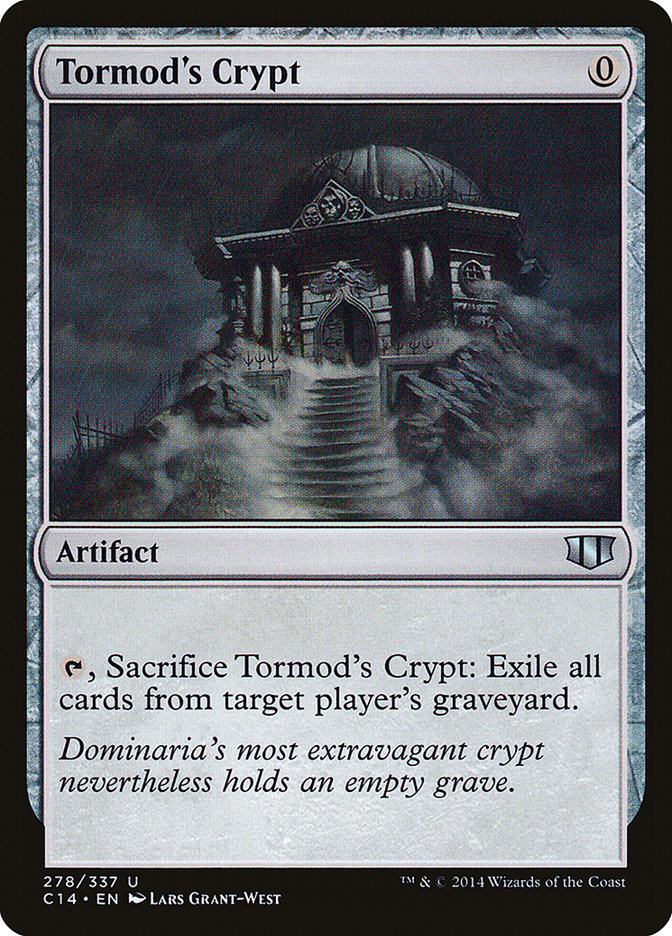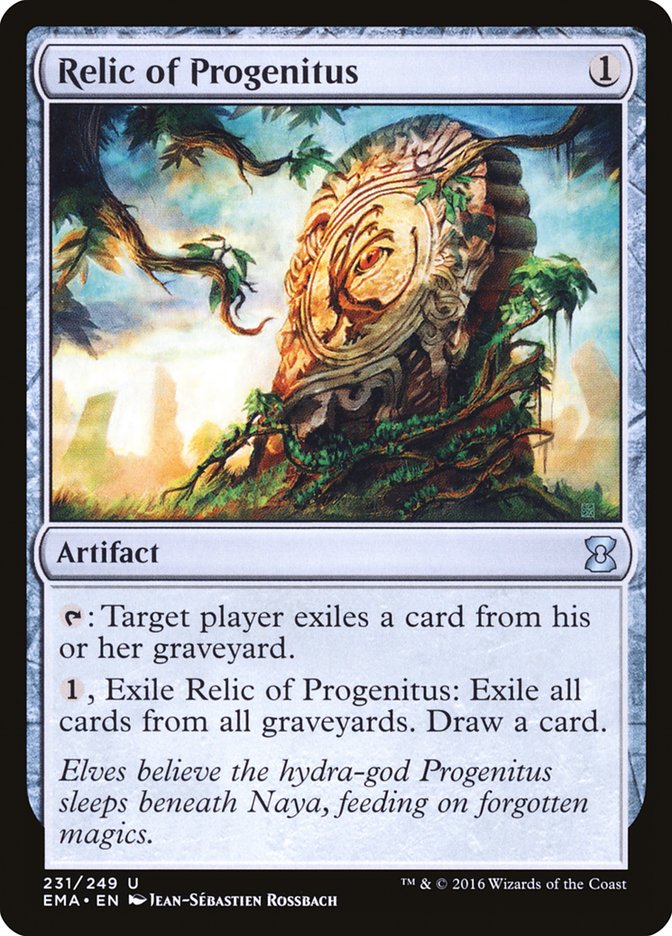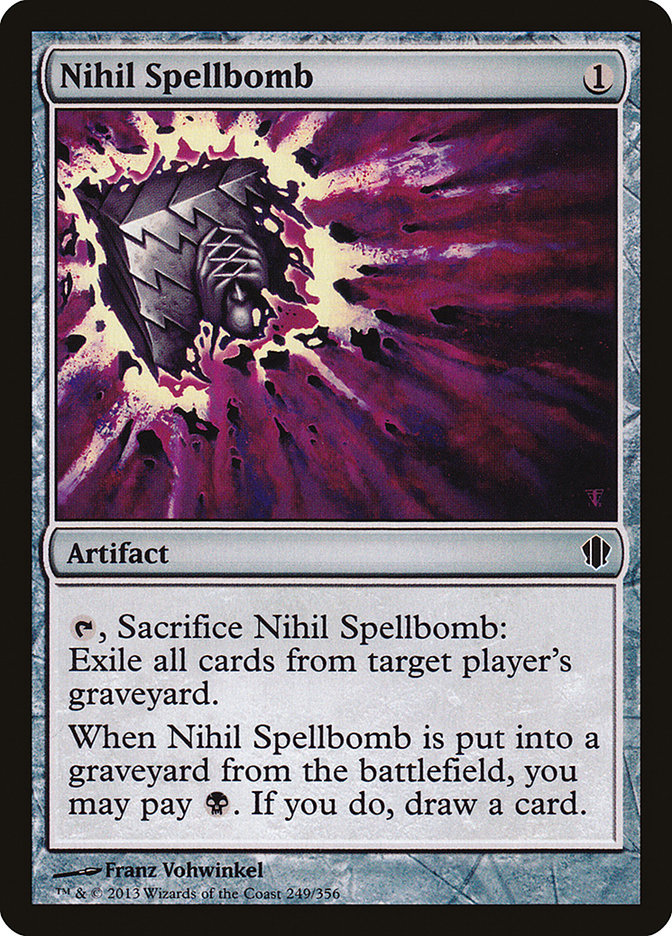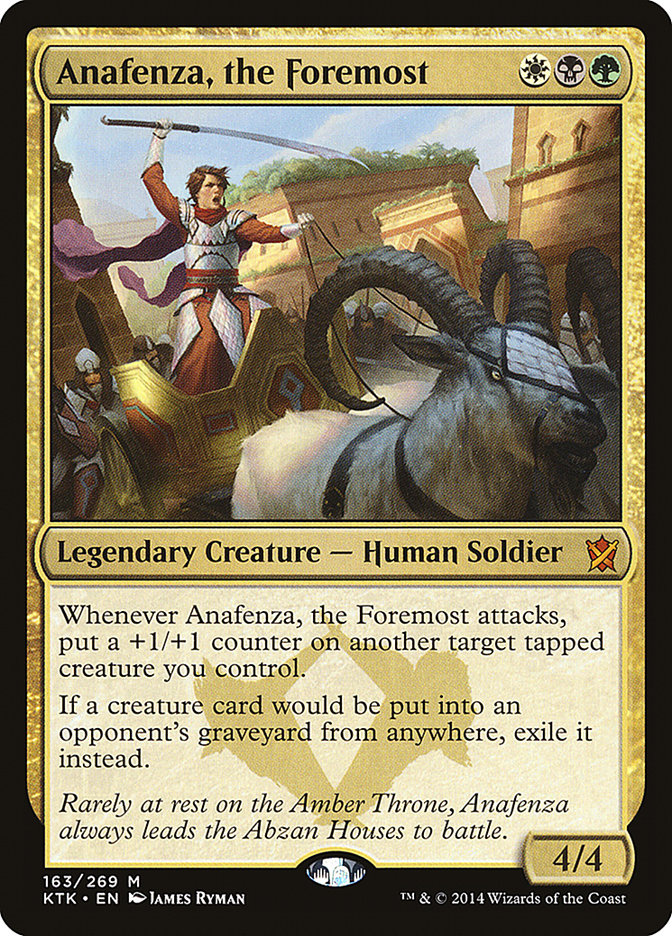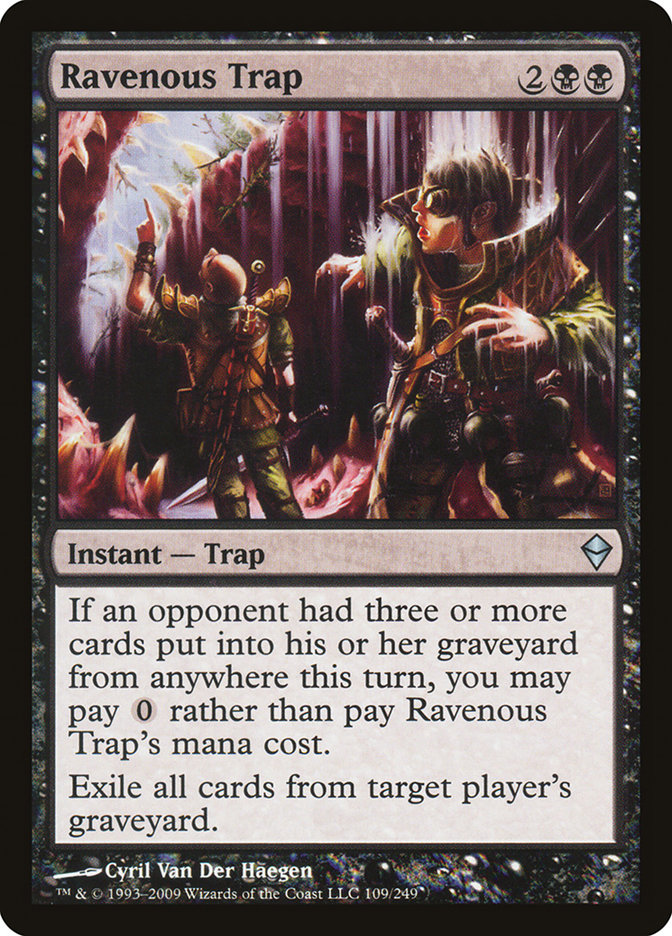For better or worse, Dredge is here to stay in Modern. It was already a strong deck, and the printing of Cathartic Reunion made it significantly more explosive. It’s not uncommon to go through half your deck by turn 2, putting anywhere from eight to fifteen power into play, and Life from the Loam gives the deck a degree of resilience that is rarely seen in a deck that explosive.
As a result of Dredge’s emergence and rise up the metagame ladder, the amount of graveyard hate in Modern sideboards is increasing. Unfortunately, most people are fairly lazy in creating their plan against linear decks, Dredge included. These decks are often unfun to test against and it’s all too tempting to simply assume that whatever hate card you like will be enough to completely shut them down. Players have done it with Chalice of the Void and Storm, with Ancient Grudge and Affinity, and they’re doing it now with Dredge with a variety of hate cards.
But what is key to understand is that not all graveyard decks are the same. More specifically, not all Dredge decks are the same, so your experience with other versions of the deck from Legacy or Vintage, while valuable, can lead you to make bad conclusions if not properly understood in context. Like all sideboarding, hating Dredge (and any linear deck for that matter) must be done so within the context of a specific plan and your specific deck.
You also need to select the tools that are best against the current version of Dredge, and in my experience most players are choosing incorrectly. So today I am going to run through the options and analyze the common hate cards for Dredge that are available, elaborating on how and when you should be utilizing each one.
But first, I want to discuss some key principles of planning against linear decks in general, so that you have some context for my later analysis.
Playing against linear decks involves making a lot of non-intuitive choices because the range of things that matter is so narrow. Any combo deck is going to laugh off anyone making normal, value plays in a game of Magic unless those plays are directly inhibiting their ability to function. So in that sense, you have to redefine how you think of the term value when playing against these decks. Drawing an extra card or two or gaining some tempo is irrelevant if it’s non-interactive and doesn’t put pressure on their life total. You gain value solely by interacting with your opponent and putting them on a clock. Plays that work toward that goal are good and plays that work against it are poor, regardless of their other merits.
Note the importance I place on putting your opponent on a clock. I don’t care how much disruption or hate you have for the matchup, if you can’t end the game, they will draw out of it and find a way to kill you. Trust me, I’m not above casting some Insolent Neonates and Narcomoebas and beating down with 1/1 creatures. Your Grafidgger’s Cage or Nihil Spellbomb look a lot scarier when you have a Tarmogoyf in play because I am forced to piece something together in a couple turns as opposed to ten.
What this means is you shouldn’t overload on hate and you should consider bringing in cheap threats from your sideboard if you have them. It also means that during the game, sometimes you have to tap out to establish a clock and give your opponent a window of opportunity to end the game. It’s scary I know, but you’ll win more games by taking away their time than you will by crippling them with your hate card. Combo players come prepared to deal with hate. You’re not taking them by surprise very often and you need to keep that in mind and not look at hate cards like a security blanket. They are just another cog in the machine, albeit a powerful and important one, but a cog nonetheless.
A corollary to not overloading on hate in general is not overloading on a single piece of hate. Your opponent is going to have countermeasures, and by diversifying your sideboard package you force them to diversify those countermeasures, which means bringing in more cards than they would like and cutting into their core pieces. Ideally I’m bringing in two to four cards when sideboarding with Dredge, but if you have a bunch of cards that I need to answer, then I have to push that up to five or six. Every card I cut from the maindeck increases my fail rate, buying you time to either end the game quickly or find another piece of hate.
The last key in fighting linear decks is to attack their engine. The best historic example of this principle is using Stifle to fight Tendrils of Agony. Many players like to think that they will just let their Storm opponent combo off only to foil their plans right at the end by stifling the storm trigger on Tendrils of Agony. But when you give your opponent free reign to execute their game plan, they are going to have the resources to fight through your trap, in this case with a discard spell. You’re much better off using that Stifle on a fetch land and fighting them before they go off. Any plan that involves fighting a combo deck after they execute their combo is going to be too fragile.
With Dredge, this of course means fighting their graveyard, so a card like Anger of the Gods, while good, is rarely going to cripple your opponent. All it really does is buy you some time. On top of this, you want to err toward graveyard hate cards that are difficult to recover from if they are answered. Sometimes they are going to have the answer to your hate and you don’t want all the work it did to be completely undone by that. Which leads me directly into what I think is the most overrated hate card for Dredge: Grafdigger’s Cage.
On paper it looks great. It costs one mana so you can cast it before they put anything into onto the battlefield, it’s an artifact so any deck can play it, and it stops all three of Dredge’s creatures from entering the battlefield. And it can be an effective card no doubt, especially in decks with Ancient Stirrings.
But it doesn’t stop the Dredge deck at the point of attack, which is in filling its graveyard. And once they find an answer they might flood the battlefield with creatures on that same turn. Or cast a big Conflagrate to answer your creatures and then flashing back a Faithless Looting to go off the following turn. Faithless Looting and Cathartic Reunion also give the Dredge player the means to dig through their deck normally in search of a Nature’s Claim or Abrupt Decay, so your Grafdigger’s Cage is likely to be answered within a few turns. At that point you would’ve been better off playing a Relic of Progenitus or similar effect.
It also doesn’t stop the primary back-up plan for Dredge, which is casting Golgari Grave-Trolls. It sounds a little nutty, but it’s a more robust plan than you think, and Life from the Loam lets you easily make five land drops. Stinkweed Imp can come back earlier to buy time as well. Strange back-up plans like this seem unreliable, and that’s because they are. But remember, Dredge is going to win most of its game ones, so you just need to steal one of the post-sideboard games, and Golgari Grave-Troll is more than capable of doing that.
It’s nice that Grafdigger’s Cage can come in against Collected Company decks, and I suspect that keeps the card in the forefront of players’ minds, but those are on the decline right now, and having a robust plan against Dredge is very important, which means playing cards that stop them from setting up in the first place.
The Heavy Hitters
These are the cards for the people that really want to make Dredge players suffer. They are the most powerful graveyard-hate effects available. Both stop any set-up, and Rest in Peace shuts down anything that they got going before it entered the battlefield, so recovery from one of these cards is going to be slow.
But that power comes with a cost, and with these cards it’s in how dependent they are on being in your opening hand. Leyline of the Void’s faults here are obvious, and its effect is such that casting it normally is rarely going to do anything of note, but Rest in Peace is a bit more counterintuitive. After all, it does exile the graveyard immediately so it’s going to be effective any time its cast, right?
Surprisingly, the answer is no. And that is due to how explosive Dredge is. A start of Faithless Looting into Cathartic Reunion is going to create a substantial battlefield with mediocre hits, at which point your Rest in Peace may be too slow. Yep, your two mana card may be too slow.
Welcome to Modern.
Even with four copies of a card, you’re only going to have it in your opening hand about 40% of the time. You can find it more reliably with aggressive mulliganing, but then you run into the issue of having a hand where you’re all-in on your one hate card and your opponent has too much time to find an answer or attack with Insolent Neonates. Playing four copies of them also prohibits you from diversifying your hate, so your Dredge opponent gets to bring in their Nature’s Claims and answer them some portion of the time.
So even the most powerful cards available aren’t going to be good enough by themselves. As a result I don’t think it’s prudent to play Leyline of the Void because it almost demands four slots. Rest in Peace is solid, but being too slow on the draw means you need to supplement it with something faster.
The Classics
Tormod’s Crypt is the original graveyard hate card, and as a result it tends to get overlooked. Really all of these cards are underrated tools in the Dredge hater’s arsenal, except perhaps Relic of Progenitus, which decks like Tron play normally. Most players are attracted to the previous set of cards because they have the capability to single-handedly win the game. That’s quite seductive, but as I stressed above it can also be a trap.
These cards are never going to cripple a Dredge player, but they are always going to do something effective. They force your opponent to play off pace and walk a tightrope, trying to give you just enough value from the effect that you’ll use it but not so much that they will be unable to recover. As a result they are going to buy you a fair bit of time, making them great options for any deck that has a naturally good clock.
Tormod’s Crypt, being zero mana, is particularly good on this axis, since you can deploy it without affecting your curve at all. In the case of Affinity, having another free artifact may actually make you more explosive, so it’s definitely the card I would choose for my sideboard.
Relic is of course the most powerful, and that’s why it sees the most play, but being forced to keep up a mana every turn negates much of the tempo you gain from exiling the graveyards, so I would caution you against choosing it as your default without a second thought.
But the desire for tempo with these cards affects Nihil Spellbomb the most of the three. Too many players are hellbent on getting the card when it is sacrificed, so they leave up a black mana every turn, giving the card the same downside as Relic of Progenitus. But remember what I said earlier about forgoing traditional forms of value. The mana you waste trying to get maximum value from your Nihil Spellbomb may be better used developing your own game plan so you can take away their time to recover.
Every deck should be considering these cards, as they are great supplements to Rest in Peace and Grafdigger’s Cage. These cards aren’t fancy, but they are effective and that’s what counts.
The Creatures
These are all fine cards, particularly because you can play them in the maindeck and give yourself a fighting chance in game one. But let’s be honest here, they aren’t true hate cards and they are much too slow to win a game alone against a solid Dredge draw. As a result you really want to play these with mana creatures if possible.
Scavenging Ooze can be fast enough when paired with a mana creature so you can activate it on turn 2, but activating it for the first time on turn 3 runs into the same issue as Rest in Peace. In my experience, a turn 2 Scavenging Ooze on the draw is a brief glimmer of hope followed by a turn 3 concession.
But if you do find yourself in a position where Scavenging Ooze has been fast enough, don’t get fancy and try to cast spells and play Magic. You’re not playing Magic; you’re playing Dredge. Play a green producing land, say go, and exile their cards as appropriate. Your Scavenging Ooze will end the game by itself quite quickly, and you want to make sure they can’t hit a fortunate group of cards and overload you.
Exiling dredgers is the risky line, especially since Cathartic Reunion can create something from nothing, so most of the time I would look to target their Narcomoebas and Bloodghasts, thereby stranding Prized Amalgam in the graveyard. Even if they manage to sneak one or two past you it won’t be enough to attack through your giant life-gaining creature.
By all means play these creatures if you can because they are solid cards in their own right that can be effective against Dredge. But if you’re relying on them, you’re just fooling yourself.
The Sneaky Sneaks
Ravenous Trap is the single most underrated hate card in the format.
Like Tormod’s Crypt and its ilk, it’s a one-shot effect that a Dredge player needs to tip-toe around, but doing so is often impossible. For one, they don’t know it is coming, and two, they can’t dawdle if it comes paired with a reasonable clock. It’s almost impossible to avoid activating the trap cost so you’re going to get the high end of the value range on this very often.
Where Ravenous Trap is a blunt force object, Surgical Extraction is a scalpel, precisely removing the most dangerous cards. Ideally you will take out their Narcomoebas and Bloodghasts and strand their Prized Amalgams like you want to do with Scavenging Ooze, and in that plan you really need a second copy. This makes it a natural pairing with Snapcaster Mage, as you can see in Corey Burkhart’s second place list from #GPDallas.
It also pairs well with Gitaxian Probe, since the extra information ensures you attack their most vulnerable resource, whether it be creatures to return, dredgers, or something like Conflagrate.
A single Surgical Extraction isn’t going to be too effective, so I’d steer clear of this one outside of blue decks, but it’s a great option for them, especially because the harder graveyard hate messes with Snapcaster Mage.
Grave Mistakes
I understand that Dredge is scary and plays differently than any other archetype, but it’s still just another deck of many in Modern. Find which cards fit your deck’s game plan the best, play a diverse suite of them so your Dredge opponent is kept off-balance, and don’t be overly reliant on your sideboard. You’ll be fine.


